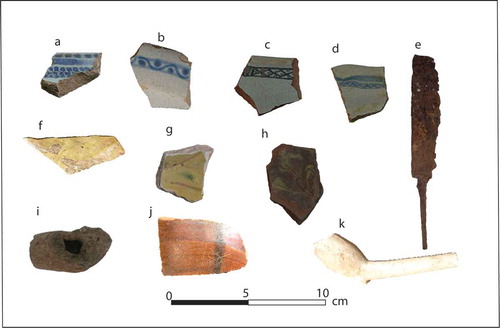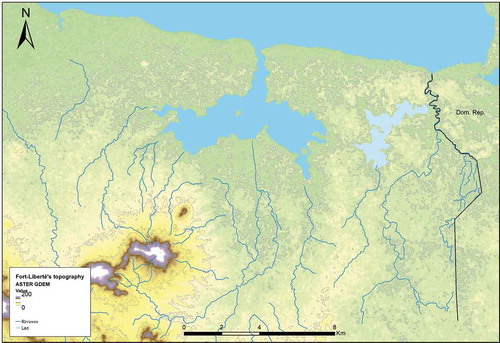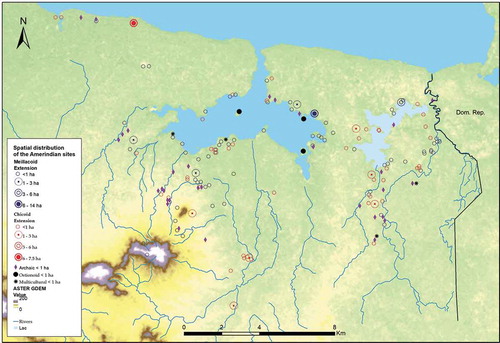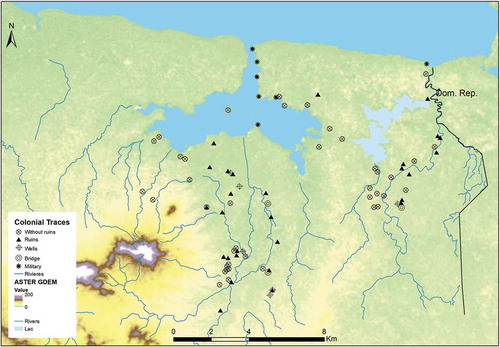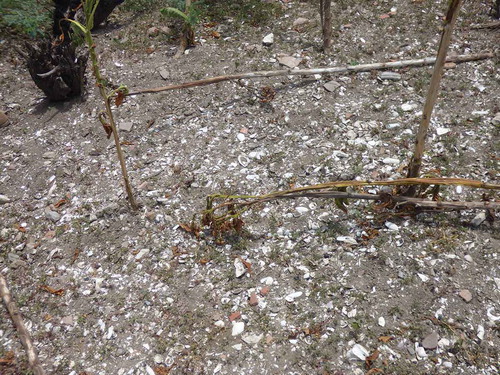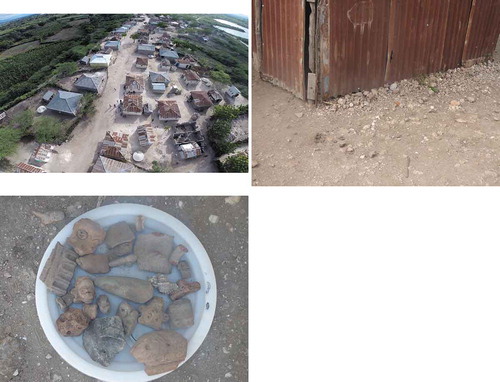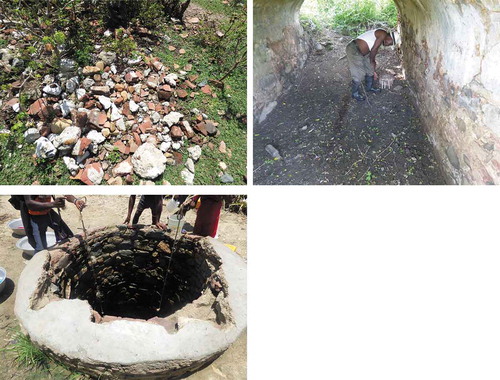Figures & data
Figure 4. Affiliations of Amerindian ceramics in Haiti: (a), (b) and (c) Ostionoid; (d), (e), (f), (g) and h) Meillacoid; (i), (j), (k) and (l) Chicoid
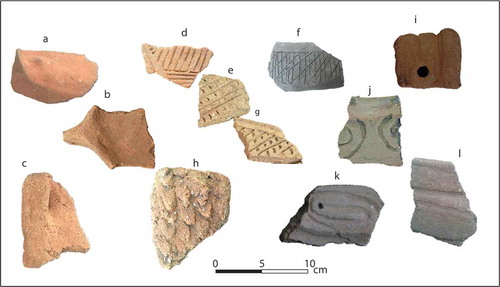
Figure 5. Sugar plantations in the humid plains in the region of Fort-Liberté showing the location of buildings, gardens, and rivers
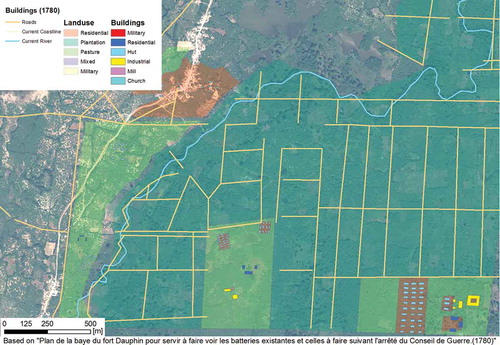
Figure 8. Different types of colonial sites (clockwise from top left): (a) vestiges of an industrial building; (b) wall of a military fortress; (c) water well; and (d) vestiges of industrial colonial ceramics
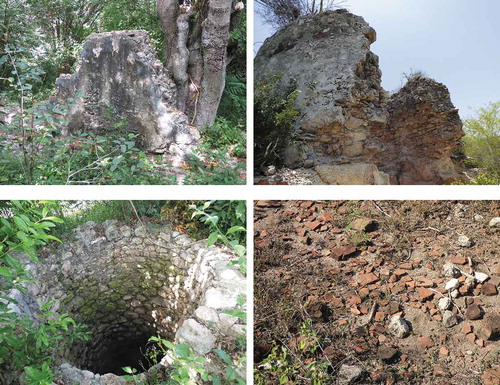
Figure 8. Different types of colonial material: (a) and (b) Faience blanche; (c) and (d) Faience brune; (e) colonial knife; (f) Biot (Jarre de Provence); (g) Cox; (h) Vallée de Huveaune; (i) local pipe; (j) Albisola; and (k) white pipe (seventeenth century)
